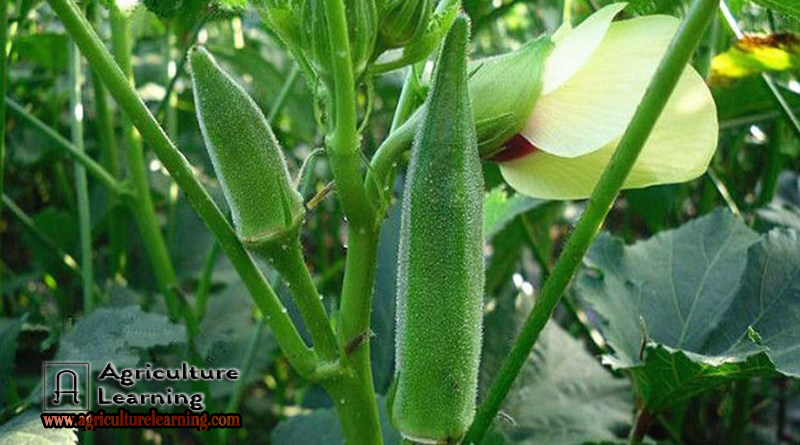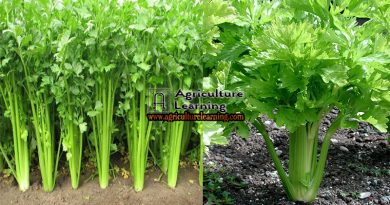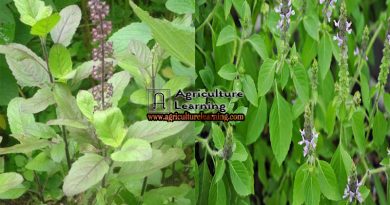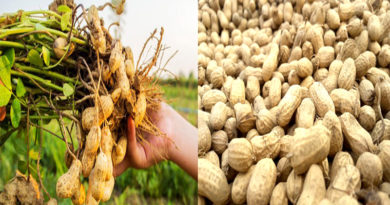Okra farming information and its disease and pest management
Okra (Abelomoschus esculents) is a vegetable crop which can be predominantly grown in tropics and subtropics. It was originated in tropical and subtropical Arica. It is also popularly known as “Lady’s finger”. In Bangladesh, this vegetable as called as “Dherosh” and in India “Bhendi” or “Bihindi”. It is good source of nutritional values and health benefits.it is one of the most important summer vegetables which is grown extensively in Bangladesh. It is used as a vegetable in Brazil, West Africa and many Others countries in Asia.
Origin: Okra belongs to the family of “Malvaceae” and genus of “Abelmoschus”.
Varieties: – There are many hybrid /Commercial varieties available in every region of Asia. Most of the varieties are under cultivation from local and hybrid. Bangladesh Agricultural Research Institute has released BARI Dherosh-1 in 1996. The variety is grown mostly round the year (Except November–January). Plants are indeterminate; erect having 2-3 branches, fruits are green with 5 marked ridges and 14-18 cm long at edible stage. Each plant produces 24-28 fruits. Fresh edible yield: 14-17 t/ha. This variety is tolerant to Yellow Vein Mosaic Virus, downy and powdery mildew.
There are few more varieties like Pusa A-4 Arka Anamika, Parbhahi Kranti from India which is resistant to YVMV.
Climate and soil: It is a summer season crops. It requires high and humid condition for growth and development. Okra may be grown in all types of soil. In sandy loam and clay-loam soils are the best for okra cultivation to achieve higher yield. The optimum soil PH range is between 6.0 and 6.8.
Seed Rate: 4-5 kg seed is required for one hectare of land.
Seed treatment: The seed should be treated with 3g of Captain or Thiram per kg seed before sowing for having good crop.
Time of sowing: Seed should be sown during (a) mid-February – mid March and (b) mid-June-July. Soil temperatures between 27-30o C is required for quick and better seedling emergence. Seeds will not germinate below soil temperatures of 17oC. Seeds should be soaked in clean water for 24 hours before sowing.
Seedbed preparation: Okra seeds should be sown directly in the field.
Seed sowing /planting: The seeds should be sown in 1.0 m wide and 20-25 cm raised bed. In between the two beds keep 30 cm space should be kept for irrigation and drainage. For early crop row to row space 50 cm and plant to plant space 40 cm, but in general 60 cm x 30 cm spacing needs to be maintained. Two to 3 seeds per hill should be sown.
Land preparation: Land should be thoroughly prepared by deep ploughing, harrowing and laddering for okra plantation.
Fertilizer dose and application method: The amount of fertilizers and manures required for this crop is: Cow dung 14 t/ha, Urea 150 kg/ha, TSP 100 kg/ha, MP 150 kg/ha. The entire amount of cow dung, TSP and 2/3rd MP should be applied at the time of final land preparation. The remaining MP is to be applied after 30 days of seed sowing. Urea should be applied in three equal installments at 30, 45 and 60 days after sowing.
Irrigation: First irrigation in case of bed sowing should be given immediately after sowing. Care should be taken not to allow over flow the beds. Subsequently irrigations should be given after every four to five days in the hot season or every 10-14 days in moderate season. Frequency of irrigation should be increased on loose sandy type of soils.
Intercultural Operation: For successful okra production weeding, thinning and earthing up is the most important intercultural operations. Earthing up in the rows should be done in rainy season.
Pest Management
Major insects and control measures:

Shoot and fruit borer
Control measures:
- Hand picking at early stage.
- Spraying of Cypermethrin group (Ripcord ) @ 1 ml/litre of water should be applied.
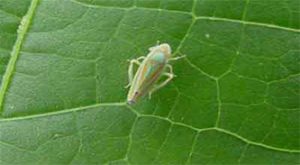
Leaf hopper
Control measures:
- Hand picking at early stage.
- Diazinon or Melathion @ 2 ml/litres of water is to be sprayed.
Aphid
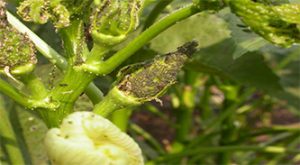
Control measures:
- Hand picking at early stage.
- Melathion, sumithion @ 2 ml/litre or Imidacloroprid group (Tido) @ 0.5 mi/litre of water should be sprayed
Major diseases and control measures:
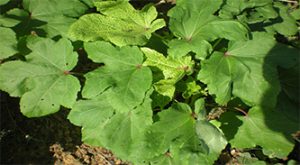
Yellow Vein Mosaic Virus (YVMV)
Control measures:
- Roguing of the infected plants.
- Control white fly, the vector, by spraying Ripcord 50 EC @ 2 ml/litre of water should be applied.
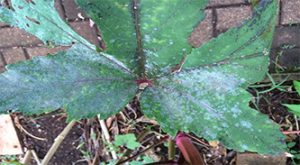
Powdery mildew
Control measures:
- Spraying of Autostin @ 2 g/litre of water should be applied.
Damping off
Control measures:
- Seed treatment with Thiram @ 3 g/kg of seed should be done before sowing.
Harvesting and Seed preservation
Crop harvest: Flowering begins from 35 to 40 days after sowing and fruits are ready for harvest four to five days after flowering. Okra pods may be harvested continuously at alternate days. The young fruits can be harvested in the morning. Delay in harvesting may make the fruits fibrous and they loose their tenderness and taste. Okra yield 14-17 t/ha with proper management.
Seed harvest and Preservation: Harvesting can be done when pods are brown. Pods from the middle part of the plants should be selected. After harvesting, pods it should be dried for 7 days to collect seeds. For seed production 100 metre isolation between two varieties should be maintained for varietal purity. The seeds should be dried in partial sun light to reduce moisture content to 7%. With proper management okra seed yield is 1.0-1.5 t/ha.

